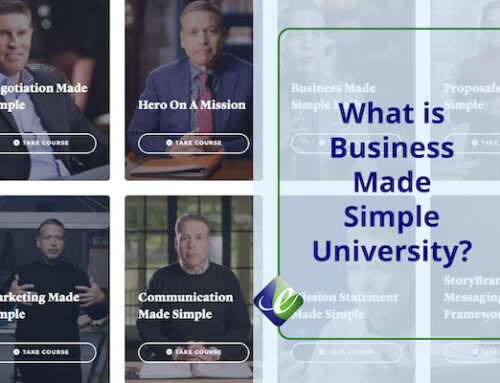
Business owners struggle to find a way to make their products “stand out” in an overcrowded marketplace. Identifying a market niche can increase customer loyalty, reduce competition, and give you a unique advantage to grow your business. This article identifies the steps in finding a niche that aligns with their strengths and has the potential for growth and profitability.
In an overcrowded marketplace, businesses struggle to be able to “stand out” and make a strong impression on their target customers. Identifying a market niche can give you a competitive advantage over your competition. To identify your marketing niche you should start by focusing on the customer, identify your brands key strengths, do market and competitive research, test your idea, and affirm your product viability.
Benefits of Niche Marketing
Identifying a market niche has many competitive benefits that give you a unique advantage over your competition including increasing customer loyalty, reducing competition, increasing marketing effectiveness, and improving profitability.
6 Steps to Identifying Your Market Niche
Identifying a market niche involves finding a gap or unmet need in a particular market that your business can uniquely fulfill. When it comes to identifying a market niche, it can be an exciting and challenging process. However, with the right approach, it can also be rewarding and profitable. By following these steps, you can identify a market niche that aligns with your strengths and addresses an unmet need in the market.
1. Focus on the Customer: Focusing on the customer is two-fold. First, we need to identify the customer problem in relation to the use of your product or service. We need to know what drives the customer to search for a solution. What is their specific motivation? Secondly, we need to really understand who the customer is. The goal is to create an almost human-like persona of our ideal customer. Let’s take a closer look.
So first, every successful business solves a problem or meets a need. The question is what challenge does your ideal client face? What motivates them to look for a solution? How can your product solve their unique situation? Are there gaps in the marketplace or opportunities you can take advantage of? For example, a meal delivery service saw a gap in the marketplace for preparing healthy foods for athletes who have specialized nutrition needs to support their training. Look for gaps in the marketplace that are not solving specific problems of the target audience.
Once you know the problem, ask yourself who has this need. Describe this person in detail by listing their demographics, psychographics, weaknesses, and strengths. Your goal is to bring your ideal customer to life by creating a persona of the person who needs your product. Your customer persona should identify what your customer thinks, feels, and believes about the problem they are experiencing. Describe the transformation that your customer will experience if they use your product. Will they go from feeling overwhelmed to being in control? Or will they go from experiencing pain to being able to lead an active life again? What does success look like for your customer? With an ideal customer clearly defined, creating advertising that resonated with the audience was easier and more efficient.
2. Leverage Your Unique Abilities: Your strengths and expertise can be a significant advantage when identifying a market niche. Assess your skills, experience, and interests to determine areas where you have a unique advantage over competitors. Don’t overlook your passions, the product you offer must be something you are excited about. By leveraging both your strengths and passions, you can offer a unique perspective and value proposition to your customers.
When a retired chiropractor and a retired dentist built a team-building service, they leaned into their medical background and built their offer around medical practices, although the service was applicable to any small organization, they created a niche and built their credibility by focusing on the medical industry.
3. Research the Marketplace: Research is critical in identifying a market niche. Taking the time to understand the industry, target audience, emerging trends, and competitors can help you find gaps in the market or areas that are underserved. This information can help you make informed decisions about where to focus your efforts.
4. Assess the Competition: When assessing your competition, it’s important to do so in a friendly and constructive manner. By studying their strengths, weaknesses, and areas of focus, you can identify areas where you can differentiate your business and offer a unique value proposition. For example, you can differentiate your product or service by offering a higher quality, more personalized service, or a more affordable option.
When researching companies make sure to review their online presence, and marketing strategies, determine their strengths and weaknesses, and analyze their product line. To find places where you and the competition are different and where you can create a value-added experience for the customer.
5. Test the market: Testing the market is essential before launching a full-scale product or service. This involves creating a minimum viable product or service and gathering feedback from potential customers. This feedback can help you fine-tune your offering and ensure that it meets the needs of your target audience.
6. Affirm Your Product Viability: Before a full-scale launch take the time to affirm the viability of your product. Assess the product’s strategic value within your brand. Will it bring value or compete with existing lines? Is it profitable or will it cannibalize profits? Do customers want and need the product? Ensure the new product or service is a good strategic move for your company.
Remember, identifying a market niche takes time, effort, and patience. But by following these steps, you can identify a market niche that aligns with your strengths, meets the needs of your target audience, and has the potential for growth and profitability.
Need help creating a market niche that makes sense for you? Schedule a free business consultation with Susan to discuss how it is done.
Related Articles:






